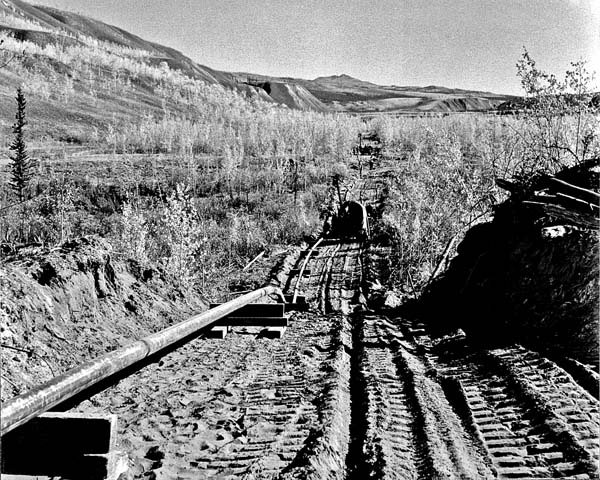Resource Geographies in the Canadian North: The Canol Pipeline and the Shutagot’ine Trail remediation project.
During Dr. Sinead Earley’s presentation, “Resource Geographies in the Canadian North: The Canol Pipeline and the Shutagot’ine Trail remediation project”, I learned that the Canol Pipeline was short-lived: it was constructed in 1942, it operated for 15 months (transporting 3,000 barrels of oil per day to a refinery in Yukon), and was it abandoned in 1945.
I thought it was interesting that the US army core built the pipeline, yet it seems they have no role in the remediation. Moreover, the land was quickly claimed in the name of economic development. Yet when it became clear the project was not a profitable investment, it was just as quickly abandoned. No responsibility was taken for the environmental impact caused to the land: pipeline segments, telegraph lines, pump stations, buildings, above ground storage tanks, and truck graveyards were all left behind. The images provided in Dr. Earley’s powerpoint presentation provided an excellent visual representation of what was left behind. Moreover, the sneak preview of the Canol doc project video at the end of the presentation helped the audience experience the journey Dr. Earley took along the Canol trail.
I am happy to hear that a federally funded remediation project in finally taking place, but it is too bad it took 73 years, costing many moose and caribou that were trapped in telegraph lines their lives. While this presentation is not directly related to my Master’s research it makes me think again about how people are quick to claim the economic benefit of resource development, but how no one wants to claim responsibility for the consequences of resource development. Dr. Earley said something she often considers is, “for whom, by whom”, where do the burdens and benefits lie. That resonated with me as something that should always be considered, but very often is not when making decisions regarding resource development. I agree it is important to take into consideration how different groups of people will be affected, as well as how different generations of people will be affected. For example, the benefits fossil fuels have provided to our lifestyle are highly likely to place substantial burdens on the future generation.
The speaker answered questions in depth, showing her extensive knowledge on the Canol pipeline. When a question was surrounding a topic she was not an expert on, she was able to direct the audience member to a source that would be more knowledgeable, eg. Lawrence Hill. If I were to ask a question I would ask her what findings or realizations surprised her most along her journey.


Recent Comments